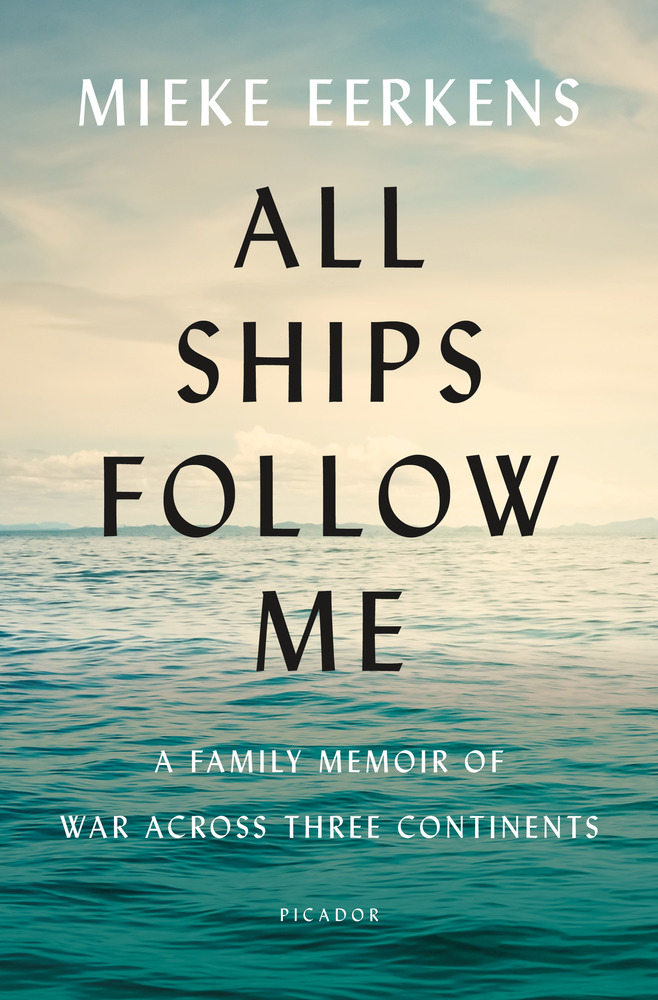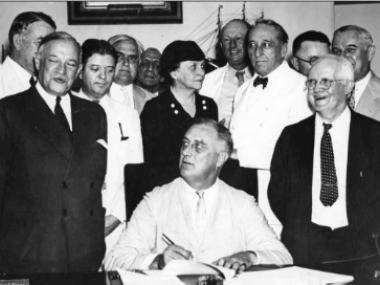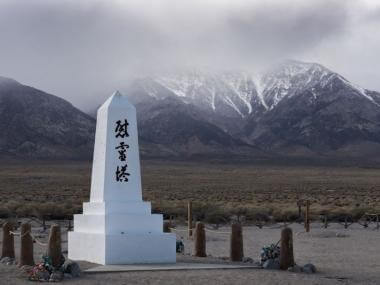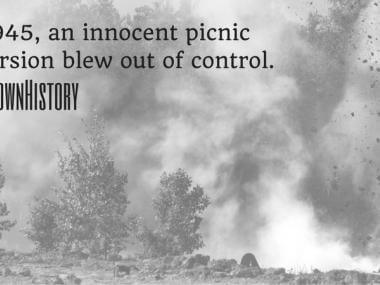The Horrors of Japan’s Civilian Internment Camps in World War II
Before the end of World War II, some citizens of Pacific countries were imprisoned in internment camps by the Japanese. Mieke Eerkens, author of All Ships Follow Me, details the devastating living conditions.

In the first section of my book, All Ships Follow Me: A Family Memoir of War Across Three Continents, I detail my father’s childhood experience in a men’s labor camp run by Japan, an Axis Power during World War II that invaded several countries in the Pacific after the bombing of Pearl Harbor. Japanese forces killed and imprisoned millions of civilians across China, the Philippines, Singapore, the Dutch East Indies, and other countries during the military’s attempt to take control of Asia.
Buy Now

While some people know that the United States interned Japanese Americans in WWII, and generally people in the United States are aware of Japan’s POW camps for Allied military members, they are often surprised when I tell them that the Japanese also interned civilians. They were made to do hard labor, starved, and beaten. Most people are also unaware of the surviving Japanese military documents that detailed plans to exterminate prisoners beginning in September of 1945. It is unknown if those plans would have been carried out because the horrific bombing of Hiroshima and Nagasaki in August brought the war to an abrupt end. Even so, over a third of my father’s camp died, and across Indonesia, thousands of civilian men, women, and children lost their lives inside the camps.
This is how we heal the wounds of history: through open dialogue.
My father was born into the third generation living in a Dutch-Indonesian colonial society on the island of Java in the Dutch East Indies. The Dutch had been present in Indonesia since the late 16th century, and the Netherlands officially colonized the country in 1800 as a result of the spice trade. My grandfather was a military doctor who rotated to hospitals that served the indigenous populations in both rural communities on the island of Sumatra and cities on Java. He had a pretty carefree life—eating coconuts and mangos plucked right from the trees, playing with the sons of the hospital’s Indonesian co-director, Dr. Sahidiman, in the aviary of their garden, or making forts in the sugarcane fields with the German neighbor boy, Friedl. He was 11 years old when Japan attacked in 1942.
My father’s happy lifestyle came to an end when the Japanese landed in Java. They rode into the cities on bicycles, row after row of soldiers with bayonet-tipped rifles angled across their backs, followed by more soldiers in jeeps. While the Japanese permitted the local Indonesians to stay in their homes under their rule, all Dutch people were rounded up and sent to camps, and mixed race “Indo” children could go into the camps with the Dutch parent, or stay on the outside with the Indonesian parent.
Because he was a military doctor, the soldiers came for my grandfather first. They took him away to a POW camp for military men. Not long after, my grandmother and her four children, including my eleven-year-old father, were put on trains to Semarang. There, they were interned in a camp where over fifty women and children crowded each small kampong house with no running water.
Life in these camps was hard. The Japanese officers and guards were brutal, beating prisoners for minor infractions. On one occasion, my grandmother failed to see an officer approach. She neglected to stand and bow to him in time. The officers beat her to the ground for this offense. My father once joined some other boys in siphoning rice from a sack with a bamboo shoot through a crack in a storage shed. As punishment, he was whipped with a horsewhip on his chest and back in front of other prisoners—many lashes—until his body ran red with blood.d.
Shining a light on these shameful parts of history rather than minimizing them helps us to reconcile, learn from our mistakes, and try to avoid them in the future.
Internees were forced do to labor like planting or harvesting crops for the Japanese personnel. Dysentery, malaria, and bedbugs were a constant problem. Severe vitamin and protein deficiency caused conditions like scurvy and kwashiorkor, a form of malnutrition characterized by the round, distended bellies of the skeletal prisoners. As the war continued, internees got less and less to eat until, toward the end, they were given only one square of tapioca mixed with sawdust or one cup of rice per day. Starvation was the cause of death for most of the fatalities.
The Japanese officers sought “comfort women”—younger women selected for rape. They sent a recruiter to the camps for this task. In my grandmother’s camp, the other women fought back, forming a dense circle around the younger women and taking the officer’s blows. Eventually, the recruiter moved on to smaller camps where he would not find as much resistance.
When the atomic bombs forced Japan’s immediate surrender, and Allied forces liberated the camps in September of 1945, their planes dropped leaflets telling prisoners to stay in the camps and wait for the Red Cross. However, my father left the camp and walked back to his mother’s camp. He had been interned for three years by then and was fourteen years old. My grandfather, interned in another part of the country, was released. He requested to be transferred to their camp to serve as the doctor there. Many prisoners, including my grandmother, needed transfusions due to severe malnutrition. The camp was turned into a field hospital to try to save their lives. As a result of his transfer, my father’s family was one of the first to be reunited after the war.
All over Asia—in China, the Philippines, Taiwan, Thailand, and beyond—the Japanese government ran civilian internment camps like the ones I described. Unlike the German Nazi concentration camps, this dark history isn’t discussed much in Western history classes, and fewer people seem aware of the Japanese war crimes toward civilians during the Second World War. Only in the past couple of decades have these events been covered more in the media. The “comfort women,” now elderly, are finally receiving compensation from the Japanese government. Japan’s leaders have issued public apologies toward survivors of their camps.
I’m happy that my father is still alive to hear these words acknowledging a trauma that has shaped his life. Shining a light on these shameful parts of history rather than minimizing them helps us to reconcile, learn from our mistakes, and try to avoid them in the future. This is how we heal the wounds of history: through open dialogue.
Mieke Eerkens is the author of All Ships Follow Me (Picador, 2019).




